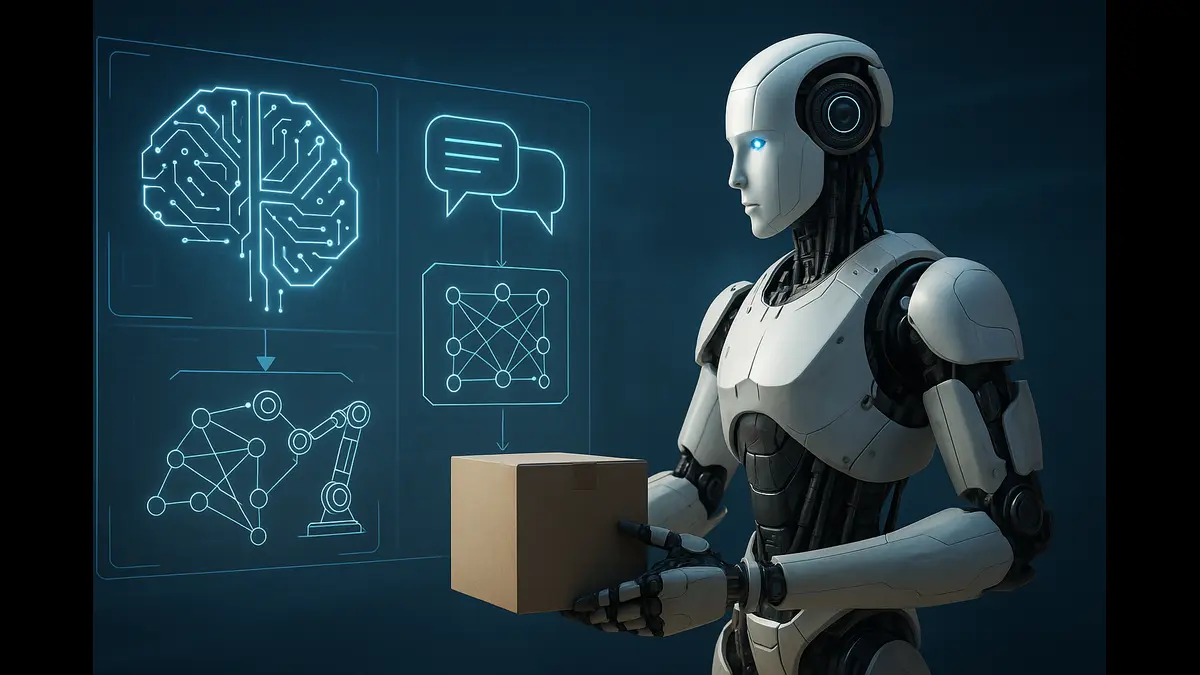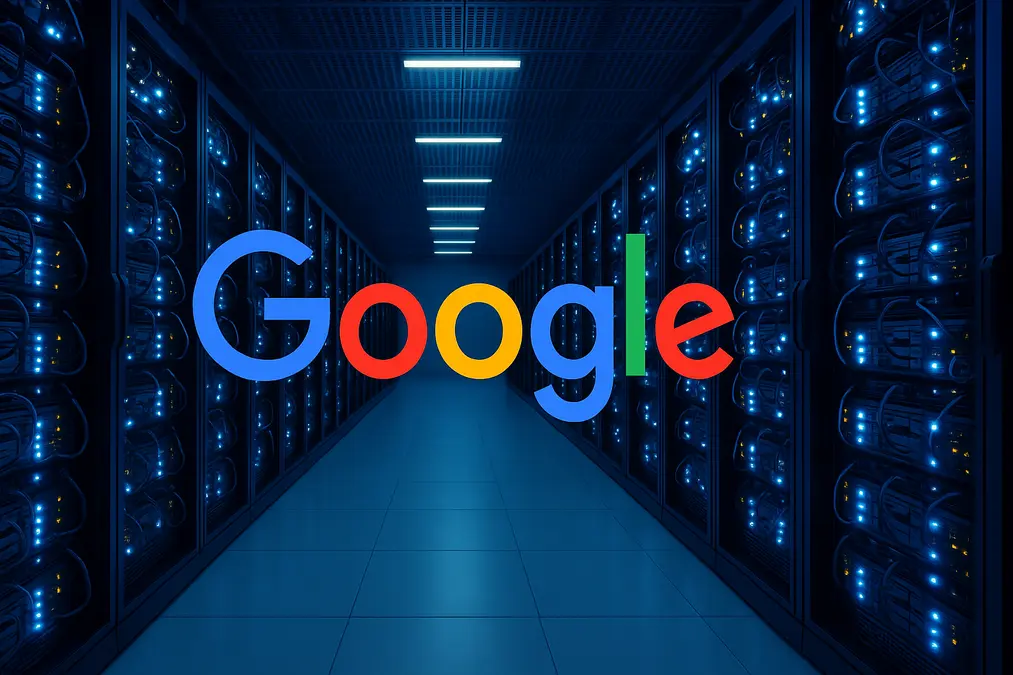
Amazon’s DeepFleet uses AI to manage 1M robots, boosting logistics speed, efficiency, and sustainability across 300+ global warehouses.
In the high-stakes world of e-commerce, where efficiency drives dominance, Amazon has unleashed a game-changer: DeepFleet. Launched in July 2025 alongside the deployment of its one-millionth warehouse robot, this generative AI model is transforming logistics. By orchestrating a vast robotic fleet across over 300 fulfillment centers, DeepFleet exemplifies Amazon’s vision for intelligent automation, setting a new standard for supply chain precision and speed.
A Leap in Robotic Deployment
Amazon’s robotics journey began in 2012 with the $775 million acquisition of Kiva Systems, introducing automated guided vehicles to streamline inventory handling. By June 2025, Amazon reached a milestone with its one-millionth robot, deployed in a Japanese fulfillment center. This diverse fleet—featuring Hercules for heavy loads (up to 1,250 pounds), Pegasus for parcel sorting, and Vulcan with tactile sensors for delicate tasks—supports 75% of Amazon’s global deliveries. Contrary to some hyped reports suggesting robots are nearing parity with human workers, the numbers tell a clearer story. With 1 million robots and 1.56 million human employees, robots represent about 64% of the workforce, a significant but not equal presence.
DeepFleet, built on Amazon Web Services (AWS) tools like SageMaker, harnesses proprietary logistics data to optimize robotic operations. Scott Dresser, Vice President of Amazon Robotics, describes it as “a real-time traffic controller for a bustling warehouse city.” By generating dynamic travel paths, DeepFleet cuts robot travel time by 10%, reducing congestion and boosting order fulfillment speed. This efficiency enhances delivery times, lowers costs, and aligns with Amazon’s push for sustainable operations.
DeepFleet’s Intelligent Core
DeepFleet’s strength lies in its generative AI, which learns and adapts to live warehouse conditions. Unlike static rule-based systems, it simulates activity to predict and resolve bottlenecks, ensuring robots like Proteus, Amazon’s fully autonomous mobile robot, operate seamlessly alongside humans. Early data shows a 10% efficiency gain, with potential for further improvements as the model evolves. In advanced facilities like Shreveport, Louisiana, where robots outnumber those in older warehouses by tenfold, DeepFleet has increased throughput by up to 25%.
Beyond navigation, DeepFleet optimizes inventory placement, storing products closer to customers for faster shipping. By minimizing unnecessary robot movements, it reduces energy consumption and equipment wear, supporting Amazon’s trials with urban micro-fulfillment centers. These compact hubs promise same-day deliveries with a lower carbon footprint, redefining e-commerce logistics.
Humans and Robots in Harmony
Automation’s rise often sparks fears of job losses, but Amazon positions DeepFleet as a partner to its workforce. With 1.56 million employees globally, the company emphasizes that robots, at 64% of human numbers, handle repetitive tasks, freeing workers for higher-value roles. Since 2019, over 700,000 employees have completed upskilling programs, transitioning to robotics maintenance, engineering, and reliability roles. In Shreveport, advanced automation has driven a 30% increase in technical jobs compared to traditional warehouses.
CEO Andy Jassy acknowledges that AI may shift some roles but stresses the creation of specialized positions. Robots assist with 75% of deliveries, reducing physical strain and improving workplace ergonomics. Amazon’s $1 billion Industrial Innovation Fund invests in technologies that enhance human-robot collaboration, though critics argue the rapid robotic expansion raises questions about long-term low-skilled job prospects.
A Subtle Industrial Transformation
While consumer AI tools like chatbots capture public imagination, DeepFleet drives a quieter revolution in industrial AI. As noted in my earlier piece, “Amazon’s Agentic AI Revolution: DeepFleet Powers Warehouse Automation,” it enables autonomous task execution, leveraging Amazon’s vast logistics data. Unlike competitors like OpenAI, focused on text generation, Amazon embeds AI into physical operations, optimizing goods movement. This gives Amazon an edge over retailers like Walmart, which is scaling robotics via Symbotic but trails in AI integration.
Amazon’s $10 billion investment in North Carolina data centers, announced in June 2025, supports the AWS infrastructure powering DeepFleet and other AI models like Nova and Anthropic’s Claude, backed by an $8 billion Amazon investment. These funds, ensure scalability for Amazon’s 1,200+ fulfillment centers. DeepFleet’s AWS reliance is clear, though no direct funding link to the $10 billion is specified, highlighting the broader AI ecosystem at play.
Ripple Effects Across Industries
DeepFleet’s 10% efficiency boost, modest in isolation, yields massive savings at Amazon’s scale—5.9 billion orders in 2023. By optimizing inventory and shortening shipping routes, it strengthens Amazon’s ability to offer competitive prices and rapid Prime deliveries. Competitors like DHL, expanding robotic partnerships, and Shopify, exploring automation, are responding to this shift. Amazon’s model sets a benchmark for logistics efficiency, pressuring rivals to innovate.
The model’s implications extend beyond e-commerce. Its real-time coordination offers insights for smart factories, distribution networks, and urban logistics systems. However, challenges persist. Ensuring safety as robots and humans coexist demands robust oversight, given Amazon’s past workplace safety scrutiny. Ethical AI development and transparent workforce transitions are also critical as automation reshapes employment landscapes.
DeepFleet is a cornerstone of Amazon’s AI-driven logistics future. As it matures, it could predict demand, allocate resources autonomously, and refine item-level fulfillment. Amazon’s broader AI strategy, powered by AWS and partnerships like Anthropic, positions it to lead industry transformation. The company’s patent portfolio, up 28-fold since Kiva’s acquisition, underscores its focus on AI and machine learning, with DeepFleet as a flagship innovation.
The one-million-robot milestone reflects Amazon’s ability to integrate AI into physical operations. DeepFleet’s quiet orchestration—moving goods with precision—proves that the most impactful technologies often operate unseen. As Amazon scales this model, it will drive faster, greener, and more efficient logistics, reshaping global commerce one optimized path at a time.
FAQs:
Q1: What is Amazon DeepFleet?
A: DeepFleet is Amazon’s generative AI model launched in July 2025. It manages over one million warehouse robots across 300+ fulfillment centers, optimizing logistics operations.
Q2: How much efficiency has DeepFleet added?
A: Early data shows a 10% reduction in robot travel time and up to 25% throughput improvement in advanced fulfillment centers.
Q3: Is DeepFleet replacing Amazon workers?
A: No. Amazon states DeepFleet complements human labor by handling repetitive tasks. Over 700,000 employees have been upskilled into robotics and tech roles since 2019.
Q4: What tools power DeepFleet’s AI?
A: DeepFleet is built using AWS technologies like SageMaker and trained on Amazon’s proprietary logistics data.
Q5: What impact does DeepFleet have on sustainability?
A: By optimizing robot movement and inventory placement, DeepFleet reduces energy use and supports Amazon’s micro-fulfillment model for greener last-mile logistics.
Discover more from Poniak Times
Subscribe to get the latest posts sent to your email.






